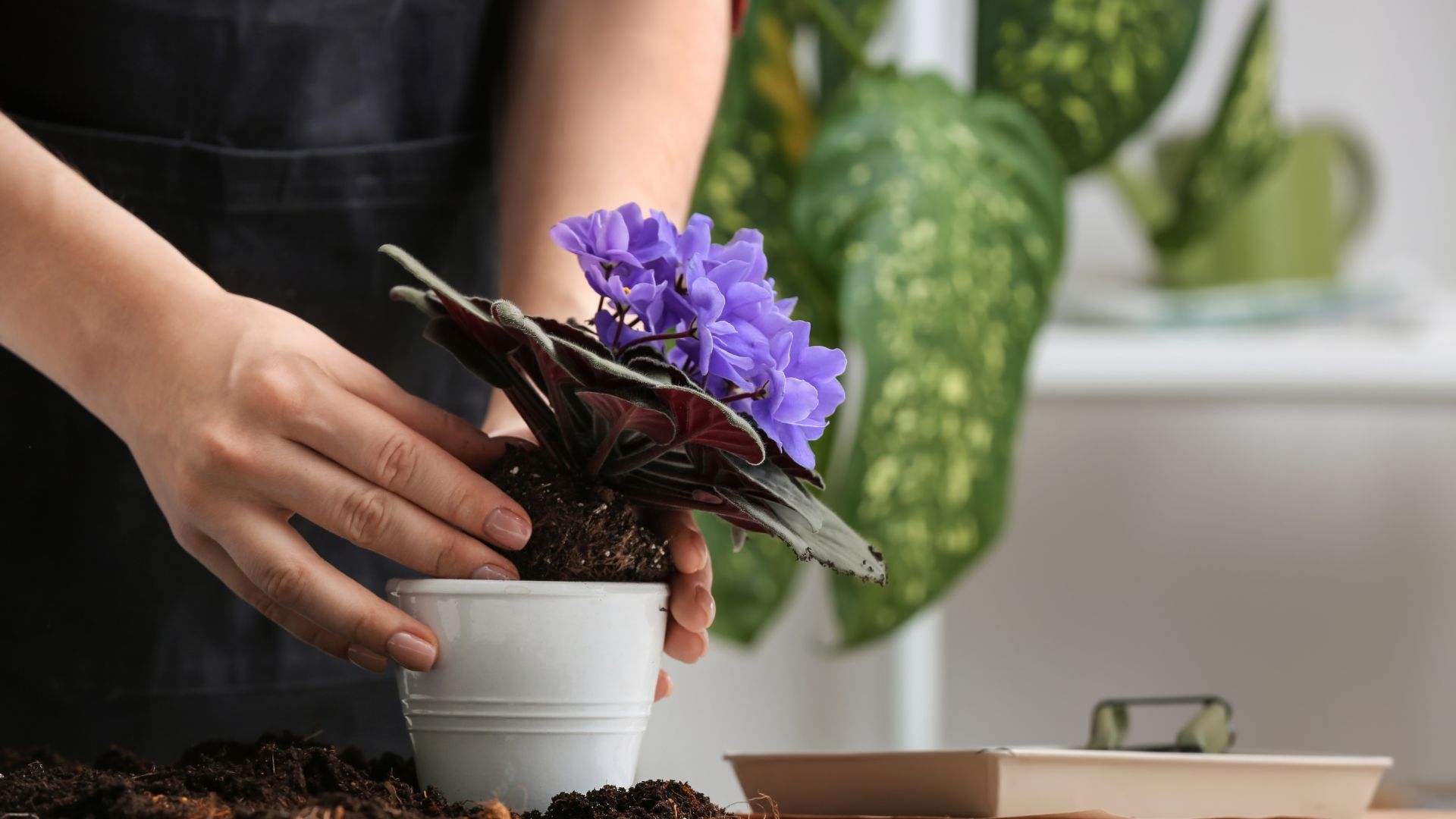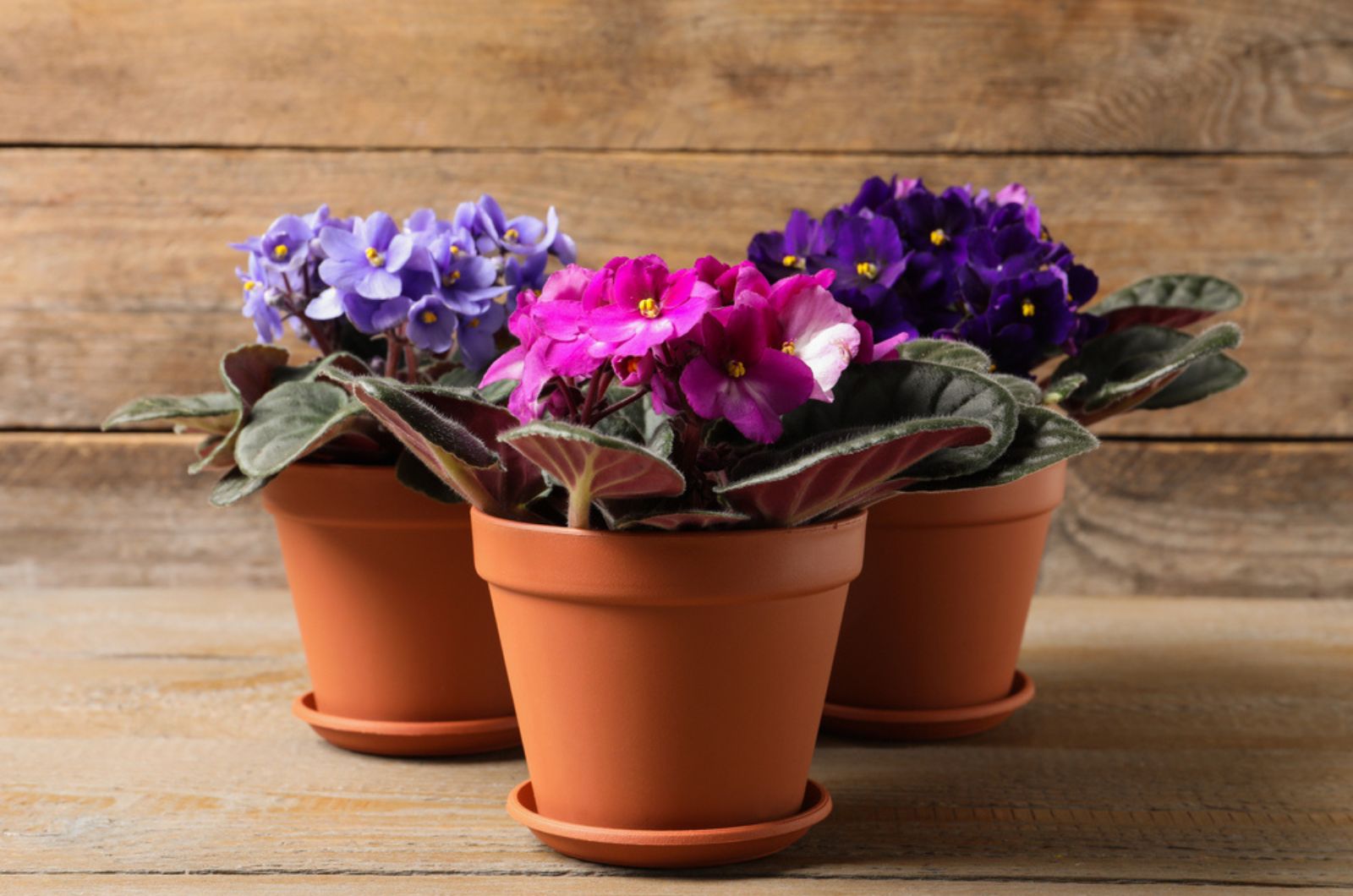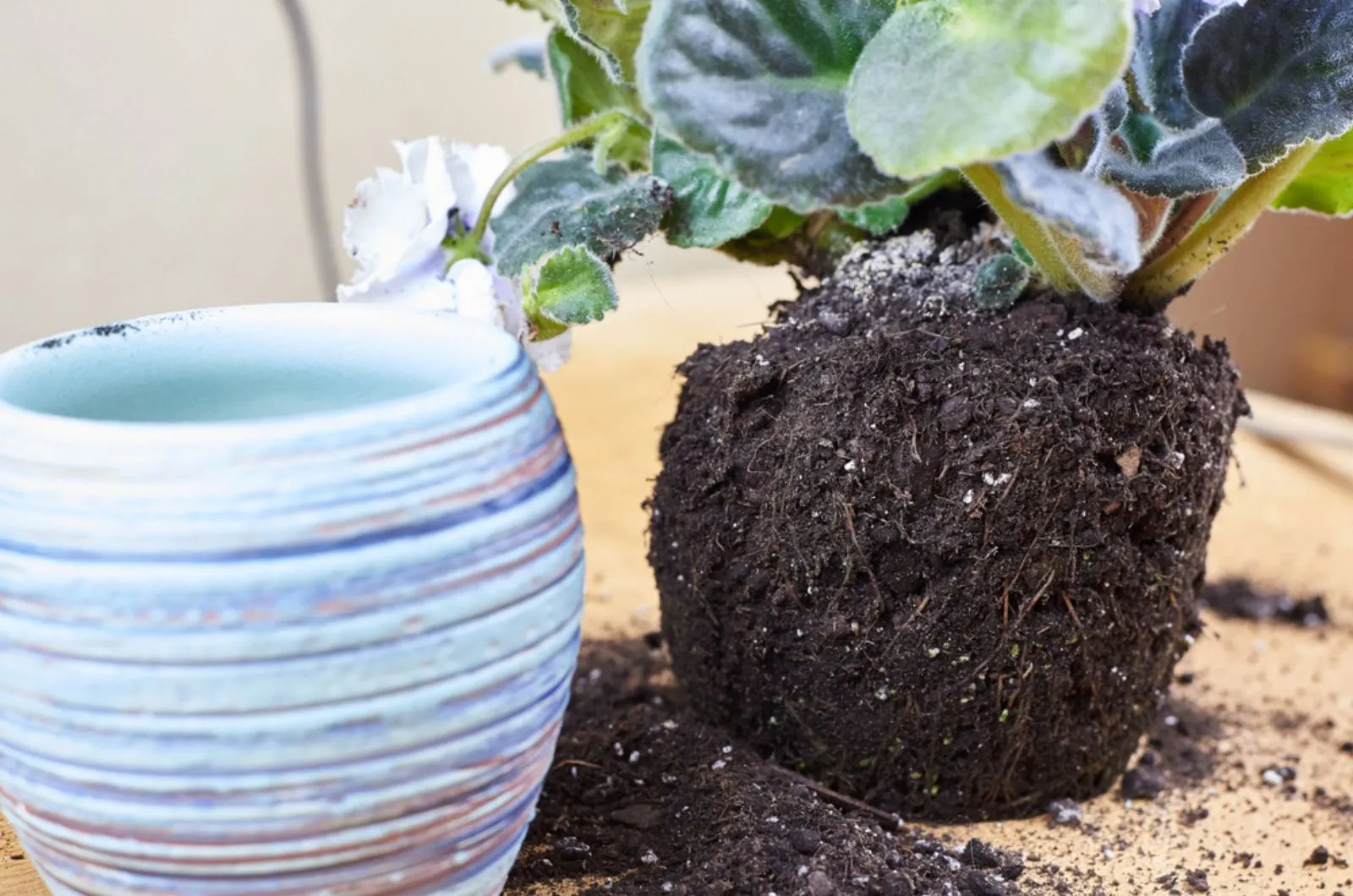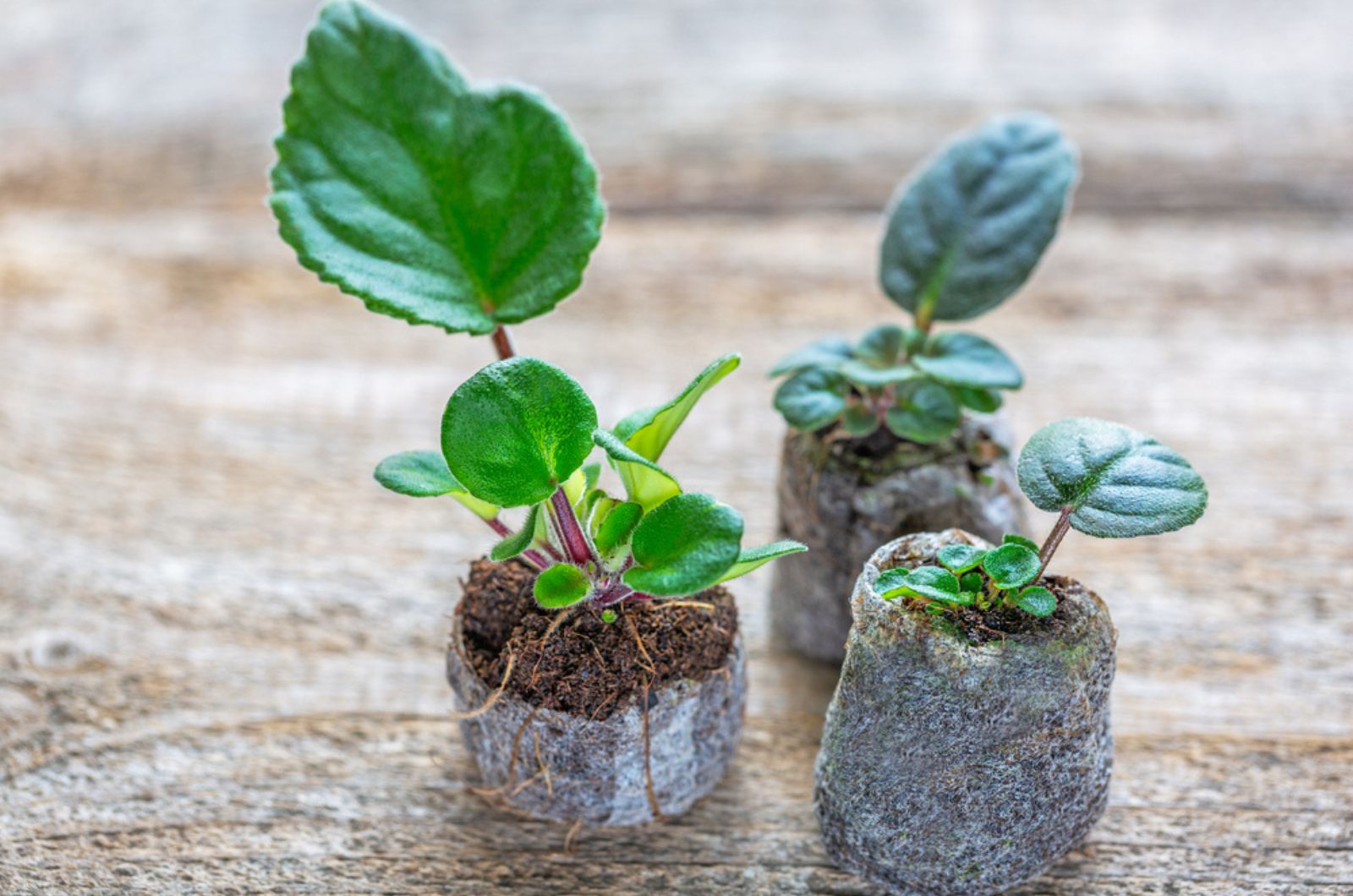African violets are petite houseplants that grace many collections. They are easy to care for, but still have a few demands.
One of them is repotting. You will have to do it often – every 3-12 months, depending on pot size.
But don’t worry! This chore isn’t that difficult. Find the best time, pot, and soil, and your African violets will thrive.
Common signs that indicate this plant needs repotting are slow and stunted growth, reduced blooming, droopiness, and potbound roots.
Here’s how to replant your African violets to another container the right way!
Let’s get started!
#1 Timing
African violets are on the list of plants that bloom year round. But if you want them to do just that, you will have to repot them quite often.
The good news is that you can do it pretty much anytime, from spring to winter. Yet, I would avoid doing it while they are in bloom since they will take longer to recover.
Repot your African violets every six months for optimal flowering. If you prefer growing them in smaller containers, consider moving them to larger ones every 3 months.
But don’t plant them in huge pots. This may lead to overwatering and root rot.
#2 Container Size
You can use the same pot or go one size larger when repotting African violets. If you’re using the same planter, make sure to trim the roots a bit so that they can fit.
#3 Drainage Holes
There are many things you need to know about terracotta planters. One of them is that they are perfect for African violets.
But no container is good unless it has potholes. If you like a planter but it doesn’t have holes in the bottom, make them yourself.
African violets need excellent drainage and holes will make sure of that. They will reduce the risk of overwatering. Drainage holes also allow you to flush the soil to remove salt and mineral build up.
Warning: Adding rocks to the bottom of the container does not enhance drainage. Only the holes do that.
#4 Azalea Pots
Azalea pots are those round planters with a lot of potholes. They are perfect for African violets, too, not just azaleas.
They are much more shallow than classic terracotta, plastic, or ceramic containers. This makes them perfect for short-rooted African violets.
You’ll be less likely to overwater these houseplants in azalea pots.
#5 Sterilizing Old Pots
One thing I love about repotting is that you get to recycle your old pots. All you need to do is sterilize your planters, and they will be good to go.
Old containers may harbor bacteria, fungi, and other disease-bearing organisms. These can affect the health and development of your African violets.
Luckily, you can clean them without any issue. Soak them in a 10% bleach-water mix for 30 minutes and rinse them thoroughly afterwards.
#6 Potting Mix
The best soil for African violets is well-draining, loose, and fertile. There are many great products on the market, but you can make your own if you want.
Mix coco coir, pumice, and vermiculite for the best results. You can add worm castings and use peat moss and perlite instead of coir and pumice.
Just make sure the substrate is well-draining and loose. Heavy soils can cause overwatering and root rot.
#7 Removing With Care
African violets are tender, so removing them from their pots can be tricky. It’s important to be gentle to avoid breaking any stems and leaves.
One way is to invert the planter, hold your hand above the plant, and gently shake it out. Make sure the soil is moist so your African violet is easier to remove.
You can also use a pencil or some similar instrument. Stick it into the drainage holes to loosen the root ball and make it easier to get out.
#8 Trim Damaged Leaves & Old Flowers
Repotting is the perfect time to catch up on your pruning. Remove damaged, diseased, or dead stems and leaves, and deadhead spent flowers.
This will help your African violet save energy and help it get over the transplant shock much faster.
#9 Water
Give your African violets deep watering after you repot them. Pour moisture in until you see it run out through the drainage holes. Let the excess drain and empty the saucer so that your plant isn’t in standing water.
If you’re using store-bought potting mix, you don’t have to fertilize these houseplants for the next 3-6 months. Most blends contain added fertilizers, so there’s no need to add more.
And if you’re using your own soil mix, make sure to add some worm castings to give your plants nutrients.
#10 Humidity
African violets will go through transplant shock, but you can make the transition easier. This is especially important if you’ve pruned the roots or disturbed them in any other way.
Cover your newly repotted African violets with a humidity dome or a plastic bag. This will increase air moisture levels and ease the effects of the transplant shock. Keep your plants covered for about a week and then remove the dome or bag.
#11 Propagation (Optional)
Did you know that African violets are easy-to-multiply houseplants? This comes in handy if you’ve broken off some stems or leaves.
Stick the broken pieces (or cuttings) in a seed-starting mix and wait until their roots develop. You can also multiply these plants in water, but remember to replace it whenever it turns murky.





